Each picture that I make is of a large female figure depicted as if seen from a low standpoint.
This standpoint is essentially that of a child looking up in wonder at a being that has huge thighs, lots of flesh, conflicting areas, and a small, often blurred, head.
The child still wonders how to make sense of such a world.
And, it appears that even if I am now in my eighties I am still trying to balance what I feel with what I see.

The Power of Light, 2023
Pastel on paper70x100cm

Balance, 2023
Pastel on paper70x100cm

Impact, 2022
Pastel on paper70x100cm

Layers, 2024
Pastel on paper70x100cm

Hit By Lines, 2023
Pastel on paper70x100cm

Rest, 2023
Pastel on paper70x100cm

Raw, 2023.
Pastel on paper70x100cm

Held By Line, 2023
Pastel on paper70x100cm

Built Back Up, 2023
Pastel on paper70x100cm

Internal Clashes, 2023
Pastel on paper70x100cm

Dreaming, 2024
Pastel on paper70x100cm

Storm, 2024
Pastel on paper70x100cm

Levered, 2023
Pastel on paper70x100cm

Passing By, 2024
Pastel on paper70x100cm

I Am Still Here, 2024
Pastel on paper70x100cm

Background Support, 2024
Pastel on paper70x100cm

Fade, 2024
Pastel on paper70x100cm

In/Out, 2023
Pastel on paper70x100cm

Human/Animal, 2024
Pastel on paper70x100cm
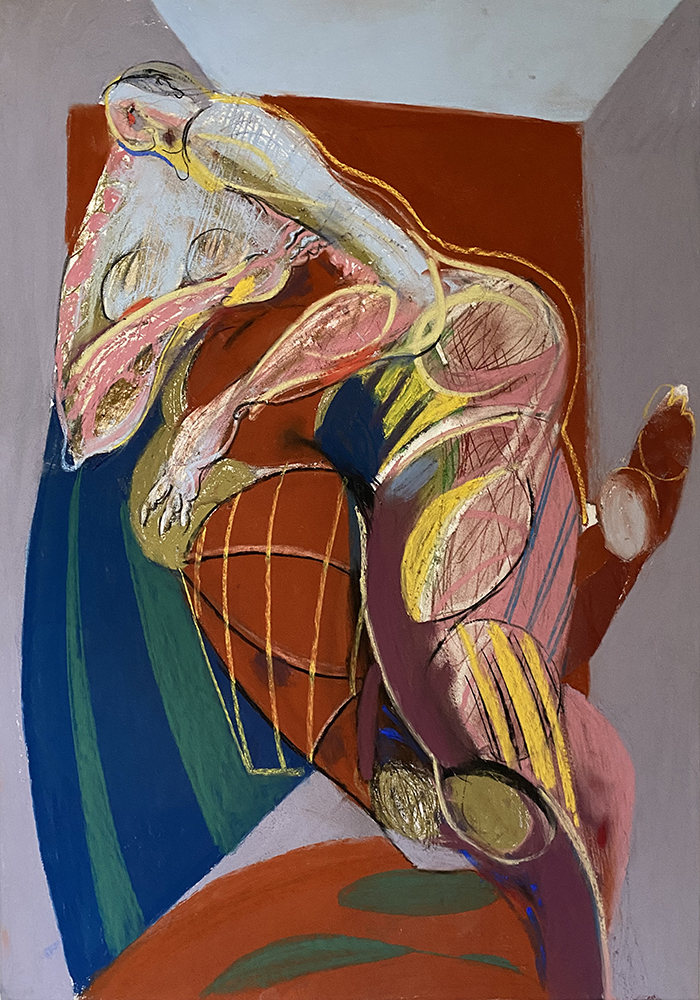
I made this image on 12 November 2021
To me it is the closest that I have ever come
to making a self portrait:
Very large,
Jerked into ungainly, angry, energy
Confined by a sort of built space
But with no roof
In my childhood her mood was different and
she was stood floating
in a steep valley with hills rising on either side
But with the same spacious empty sky above
This image felt like facts that made no sense
Then on 19 September 2023
I came across a quotation from a novel
Written by Elizabeth Bowen in 1938
Called The Death of the Heart
"Each one of us, keeps battered down inside himself,
a sort of lunatic giant impossible socially,
But full scale."
The Reviewer then goes on to say that
"The human heart lives, and Bowen, hears its
"knockings and batterings".
In fact she hears nothing else".
26/09/2023
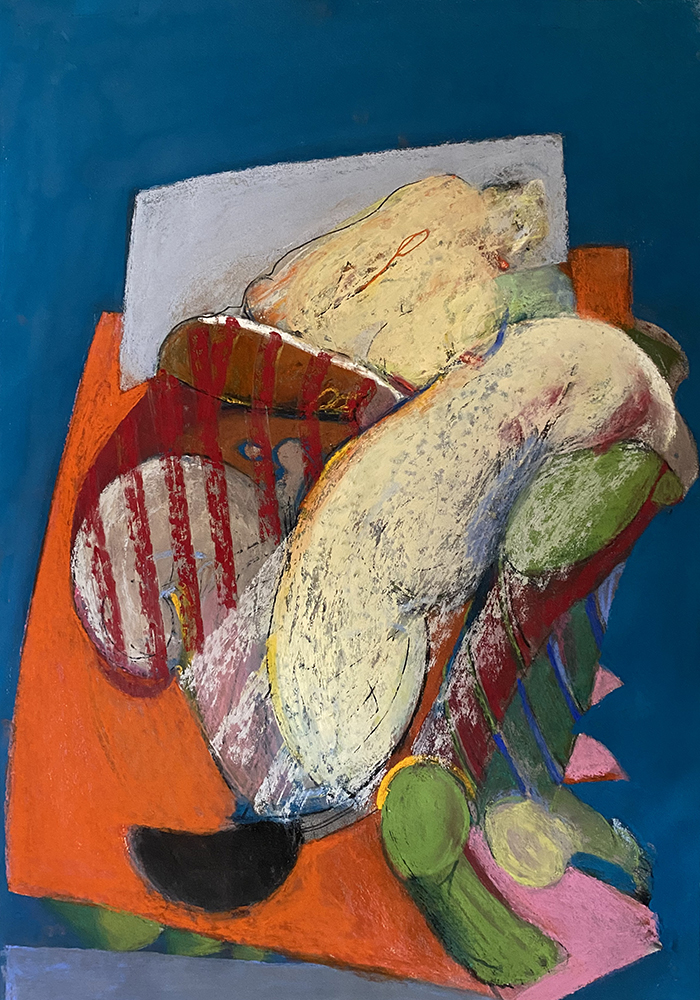
Untitled 040 & Untitled 039
Charcoal and pastel on paper70x100cm
2023
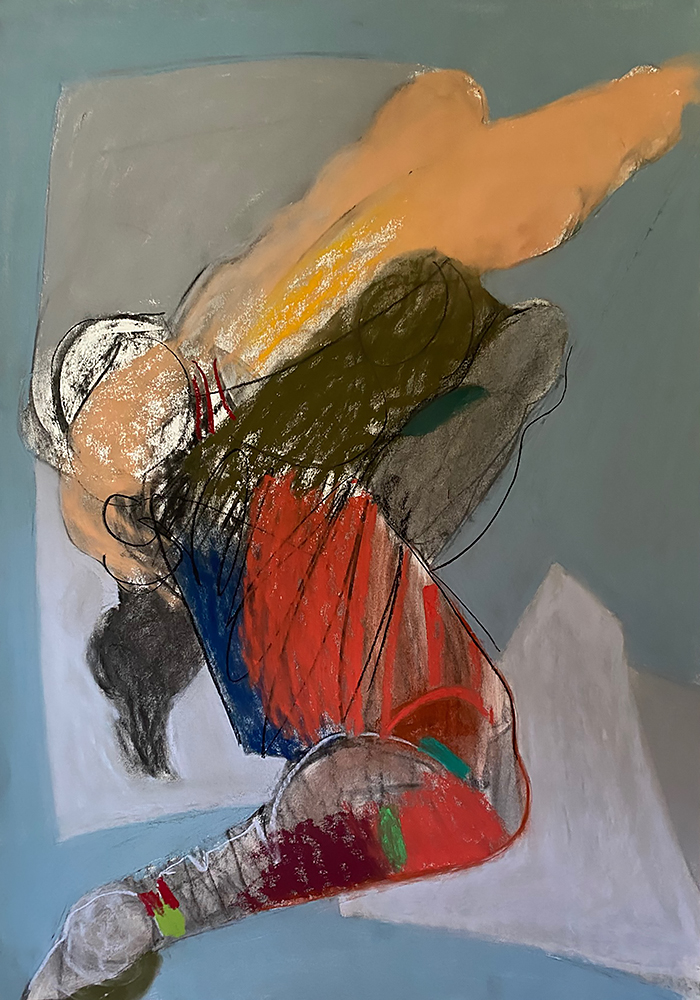
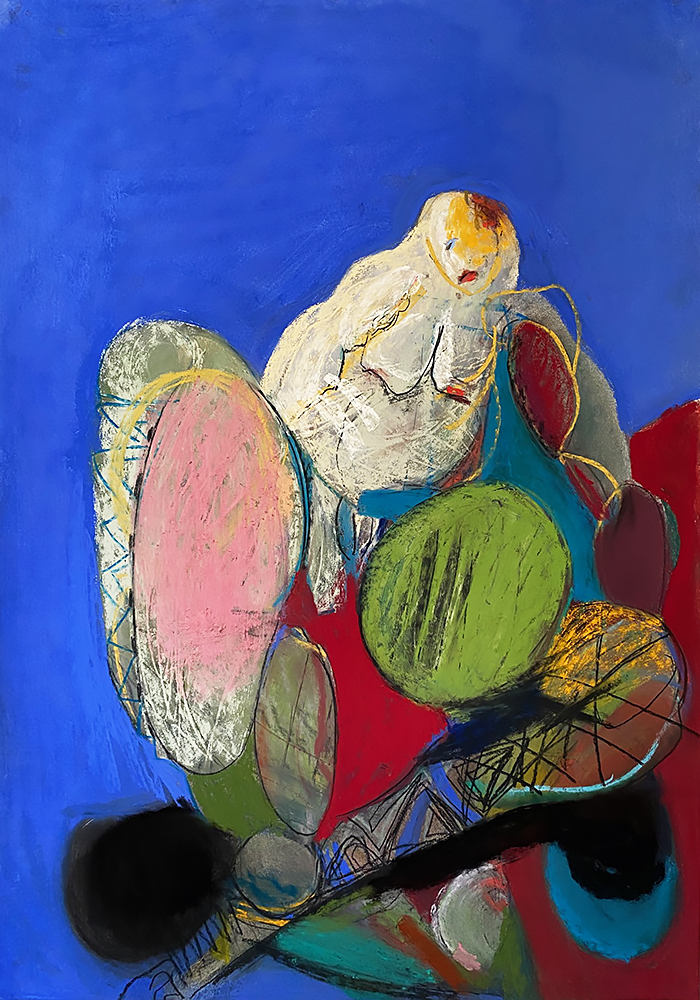
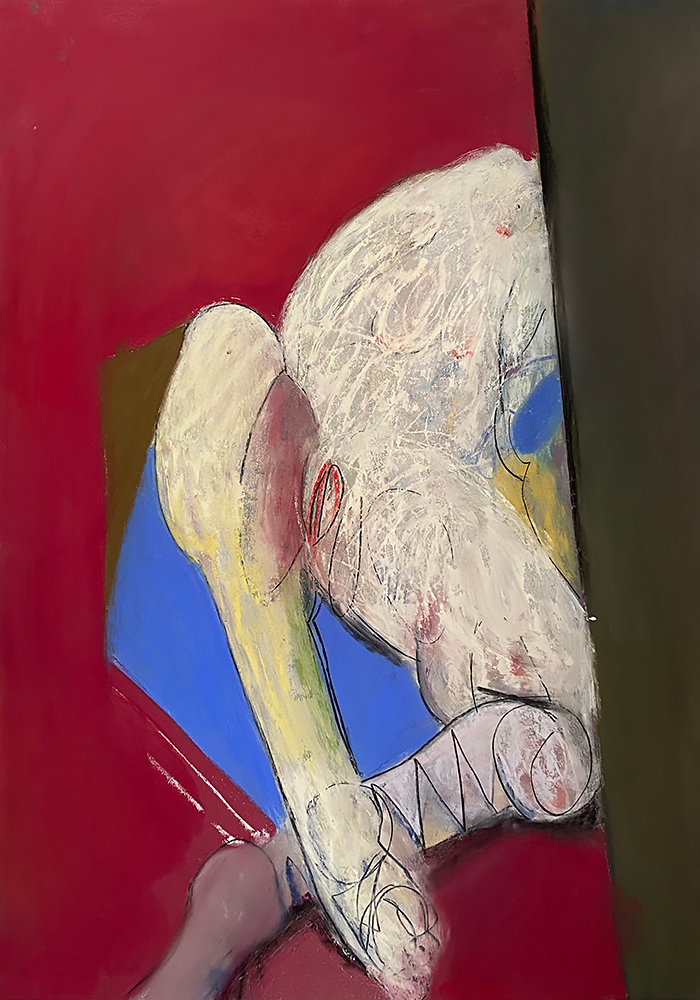
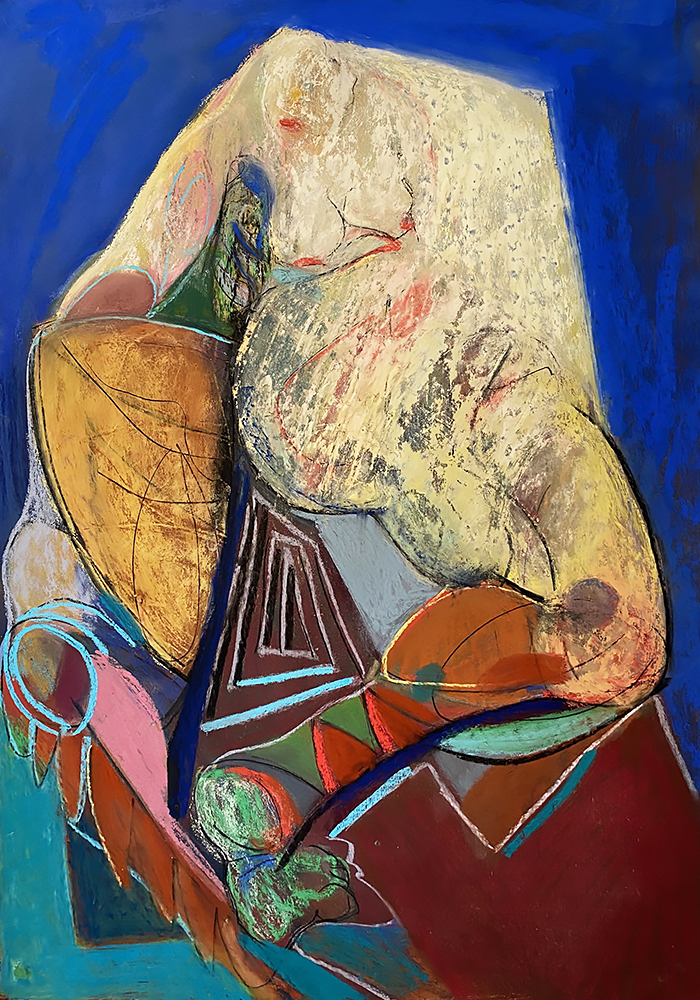
Untitled 038, Untitled 037, Untitled 036 & Untitled 035
Charcoal and pastel on paper70x100cm
2023
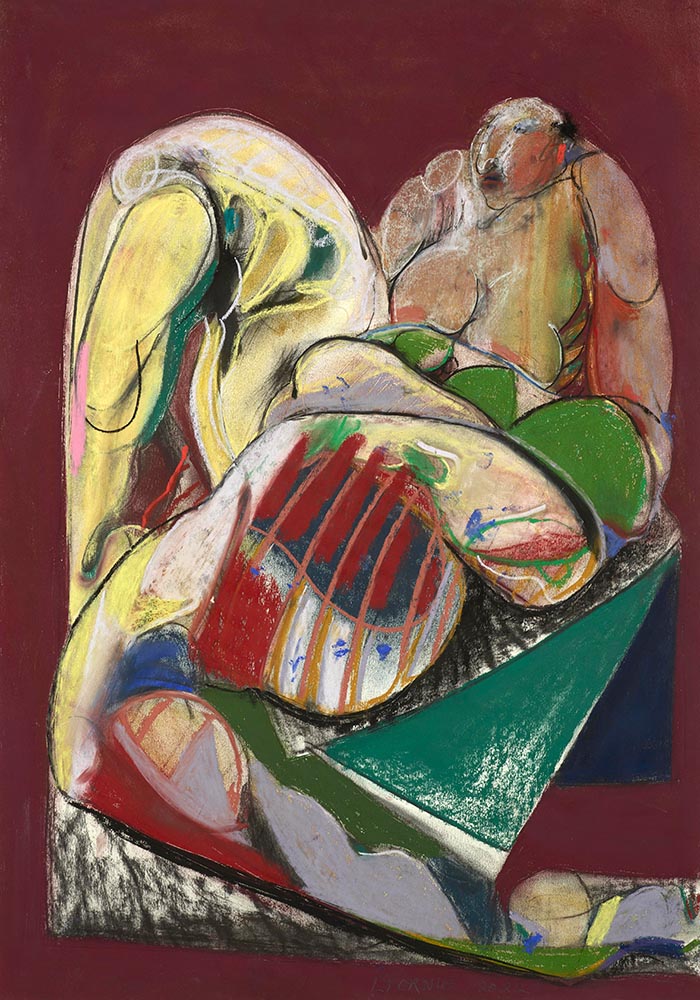
Untitled 030
Charcoal and pastel on paper70x100cm
2022
Feeling Through Structure
I was born in South Africa.
The South African landscape contains thousands of paintings on rocks.
My grandfather collected prehistoric flint tools which were unearthed when building towns. Reminders of ancient human history lay all round me.
Flint tools are beautiful beyond what is necessary for pure functionality. Even this far back in our history humans seem to find that making something well and beautifully is enriching.
When I travelled in parts of Europe and came into contact with medieval churches covered in hand carved sculptures I really felt the power of human dreaming.
Here were figures that had curves.
Figures full of human emotion.
Figures that had amazing energy often conveyed through the way that their clothes fell round and over their bodies.
And all this excitement and energy was completely at one with the geometric structure of the building.
In fact the underlying geometry stabilised and seemed to increase their power.
This was communal dreaming on a monumental scale.
I wanted to live with such objects around me in my life.
Acquiring one was not a practical proposition.
I decided that I would just have to make my own in timber.
So in 1966 I taught myself to carve.
From 1984 to 1995 I found a place to work in the Adam Pottery in Edinburgh. There I could work for ten to twelve hours a day exploring the softness and movement in clay, as well as how adding colour affects a three-dimensional form.
Since 2000 I have been making artworks using pastels and charcoal on paper.
I was taught to look at the world as if I was looking at it as a self-contained outsider.
But I experience the world as a stream of information that blows around and past my body, but mostly round my head. This constantly changing stream demands my immediate attention.
Creating art is a way that I have found to slow the movement down a bit and explore its impact on my sense of self.
I draw the outline of a figure in charcoal.
The figure must be large. I need room for her to explore her reactions and sensations as they occur in different areas.
I work into the shapes with colour, texture, and more lines.
The figure then has to find ways to re-establish herself as a recognisable, coherent, human presence.
She does this one block of colour or line at a time, while I concentrate on structural devices and decorations that might help her.
I stop working on a picture when I see that the various areas have found ways to emerge in and out of the space that she has created for herself, to form into a dance of feeling.
Lorraine Fernie
London 2022
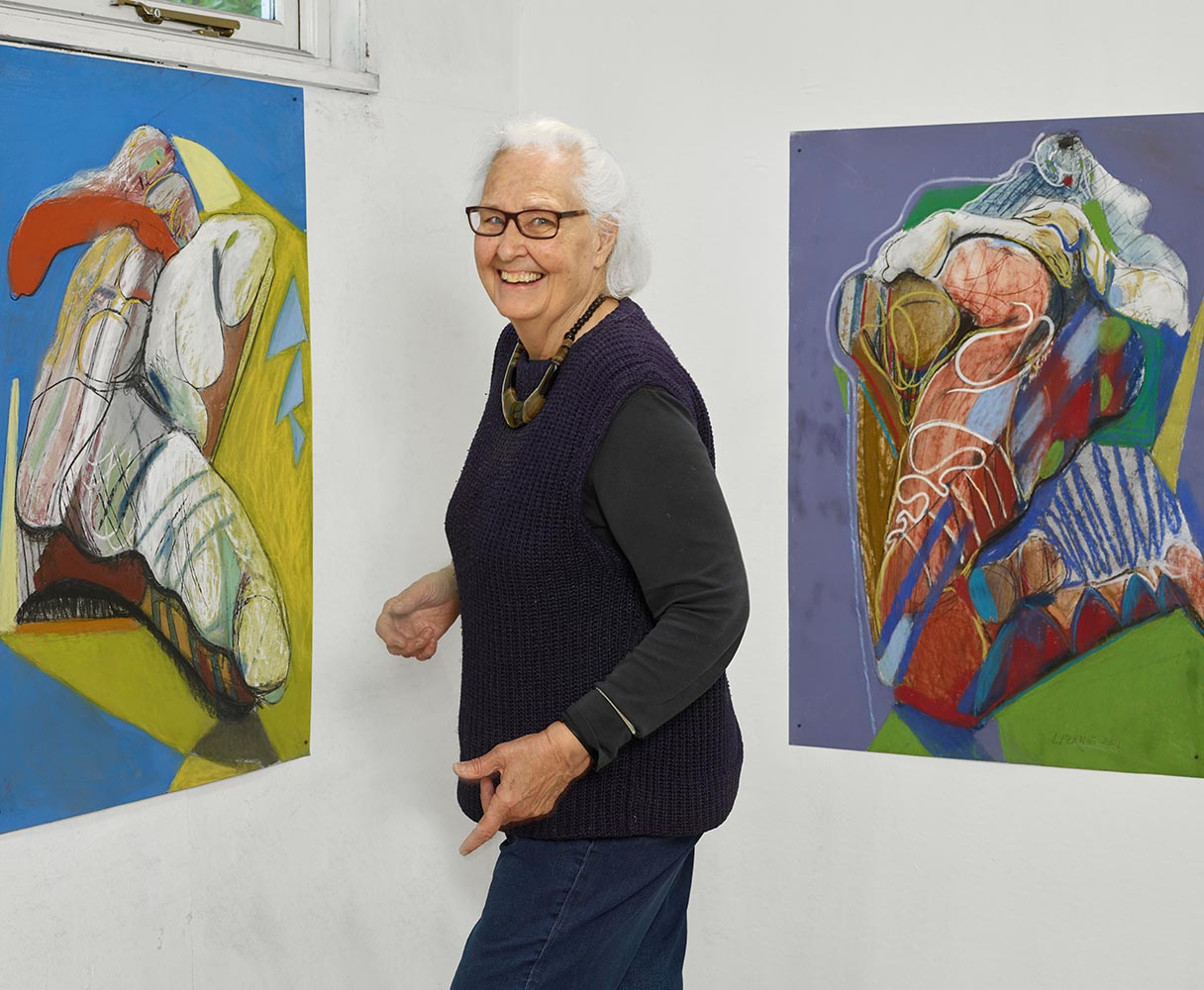
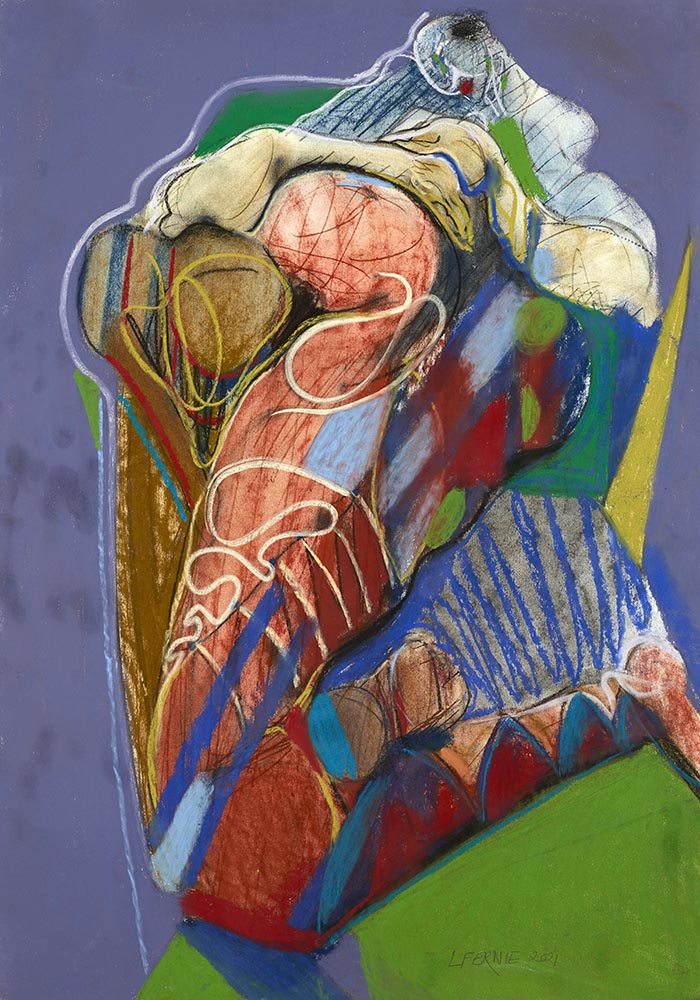
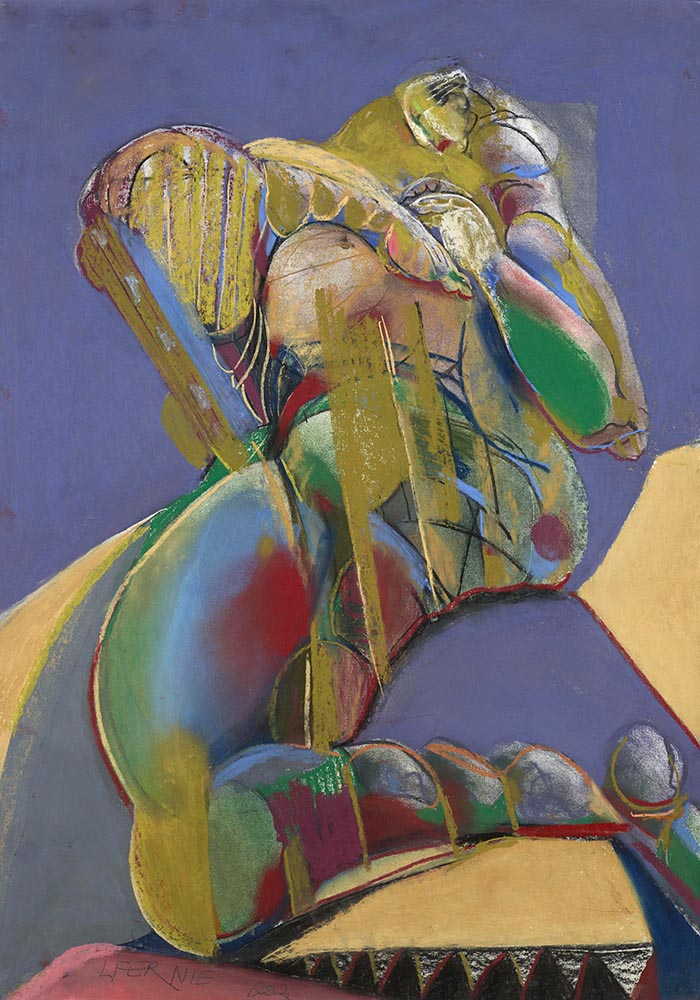
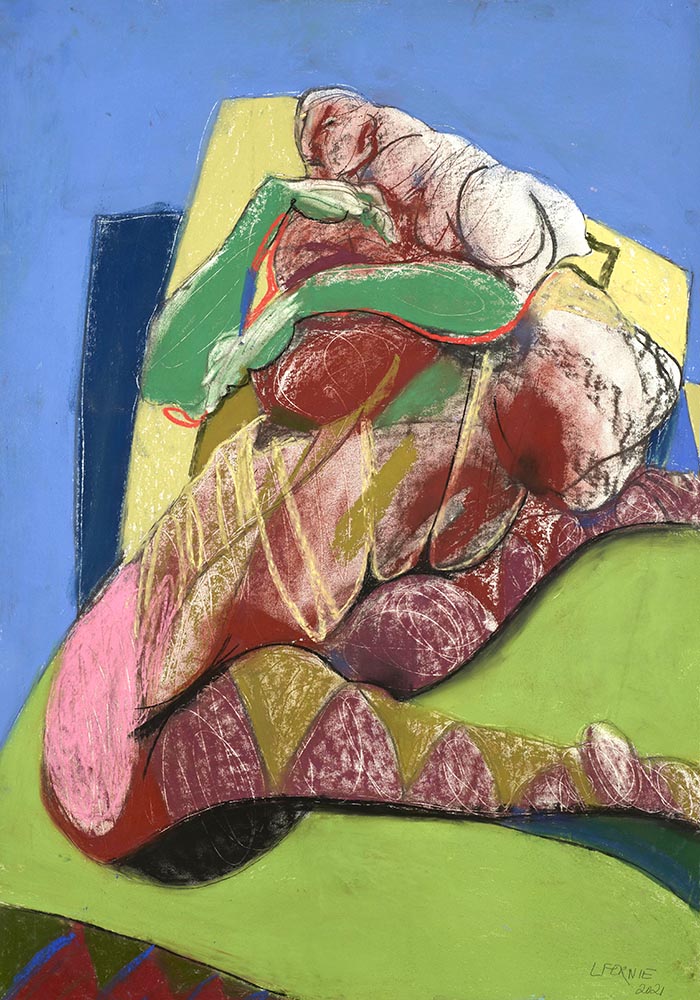
Untitled 024, Untitled 023 & Untitled 022
Charcoal and pastel on paper70x100cm
2021 (024 & 022)
2022 (023 & 021)
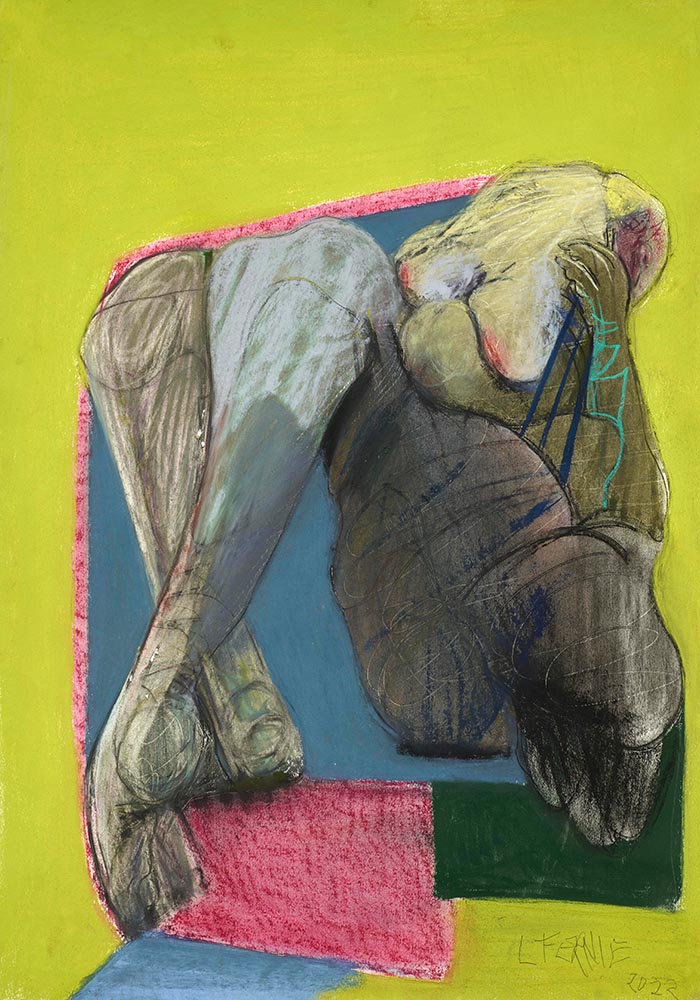
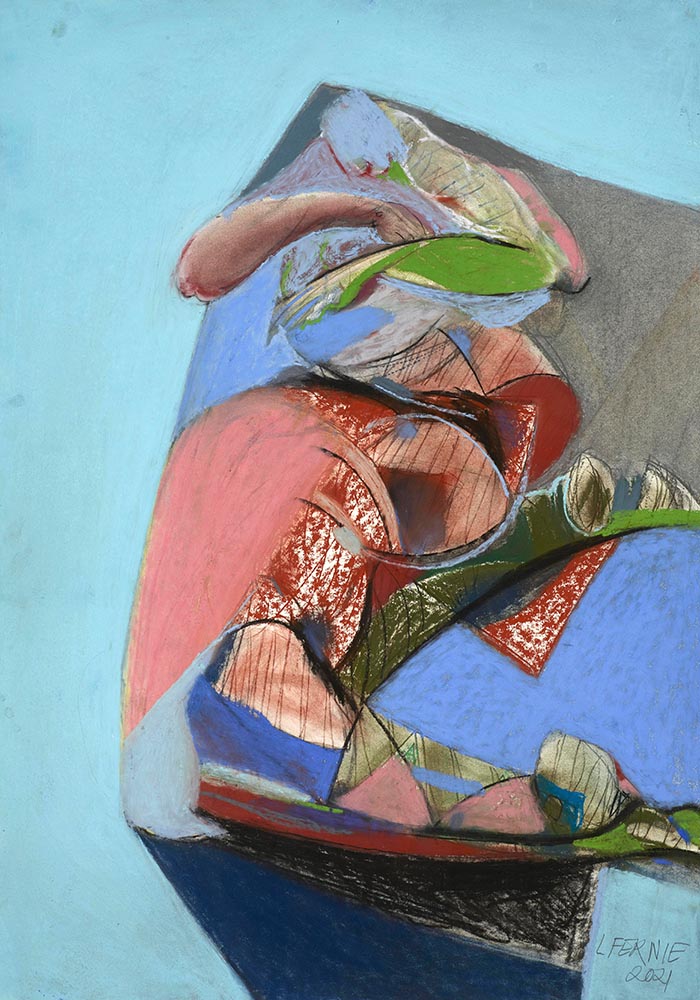
Untitled 019 & Untitled 018
Charcoal and pastel on paper70x100cm
2022 (020, 019 & 017)
2021 (018)
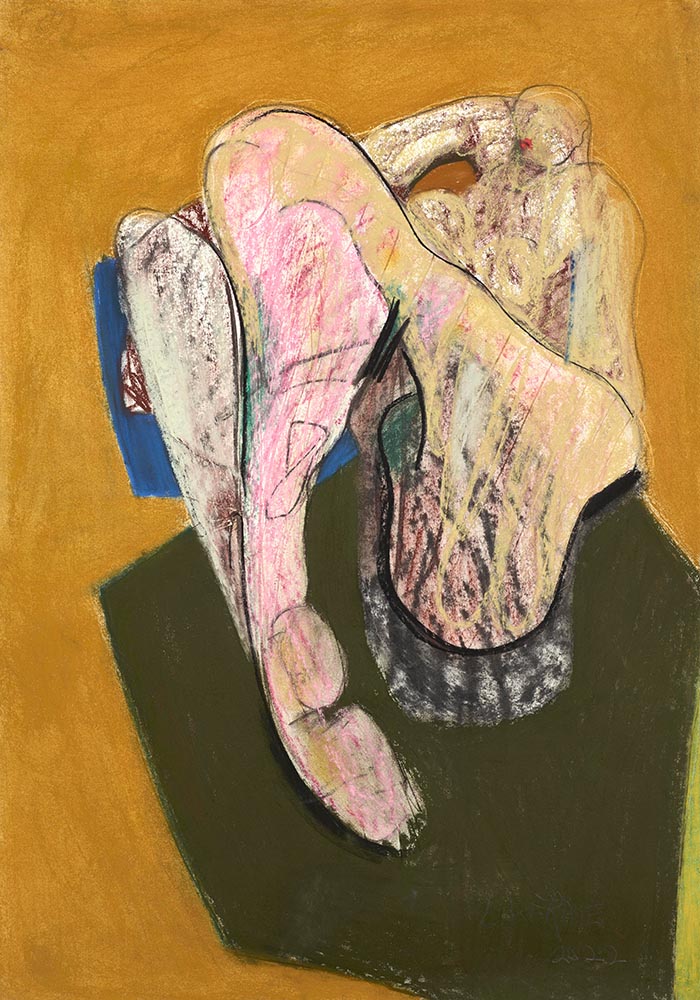
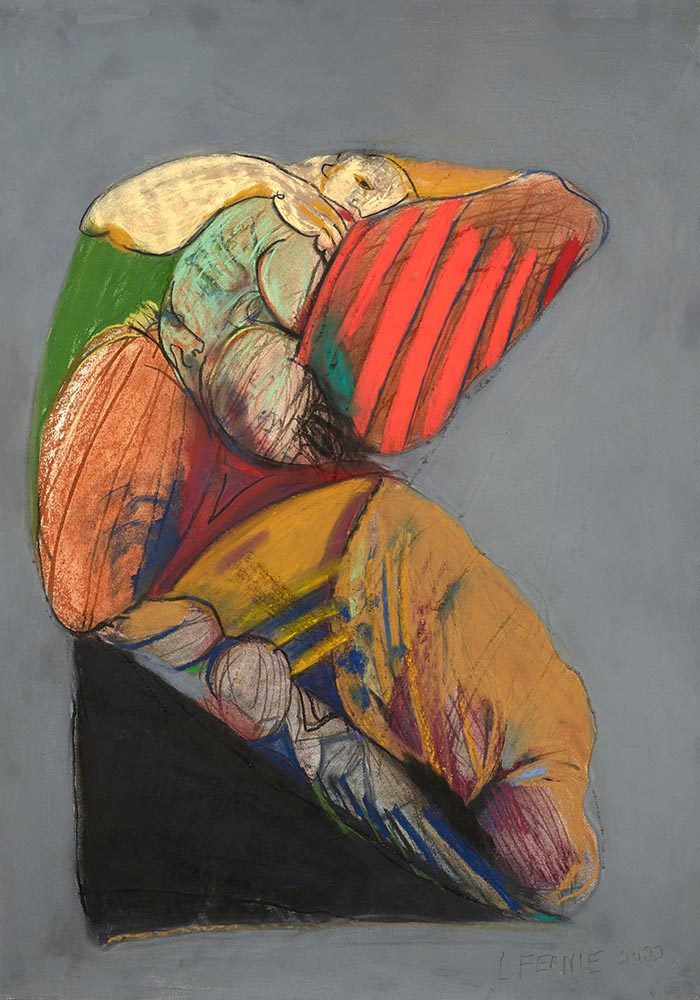
Untitled 016 & Untitled 015
Charcoal and pastel on paper70x100cm
2022
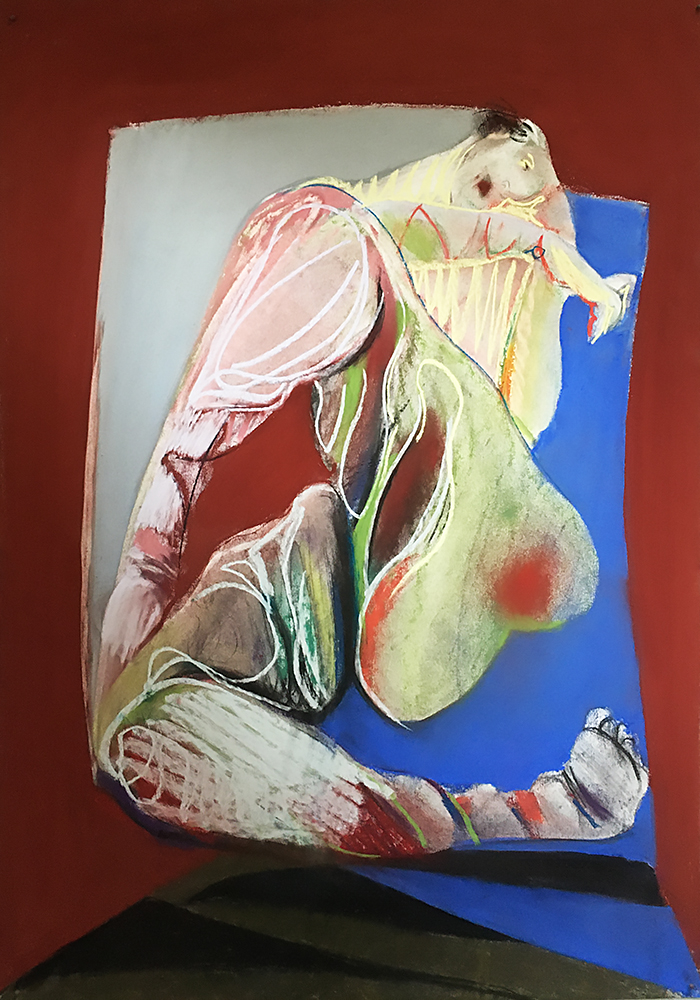
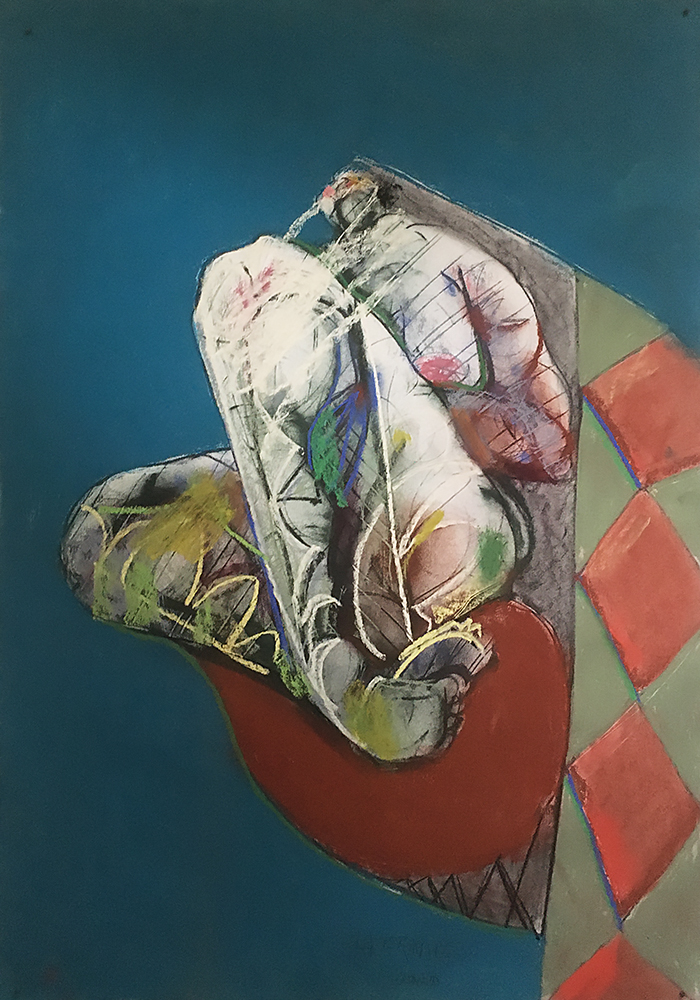
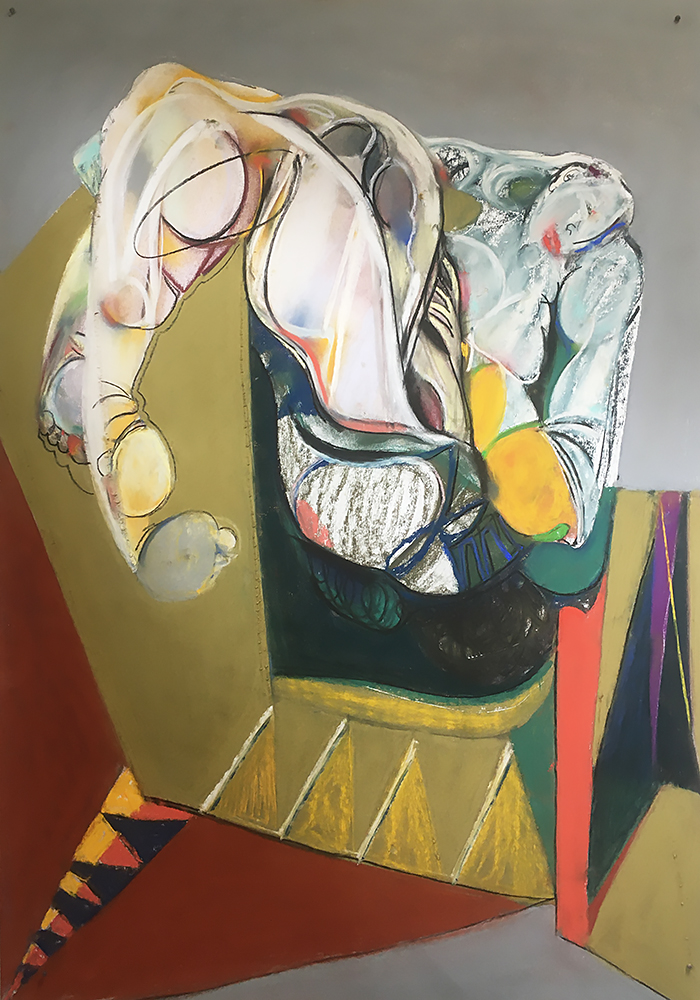
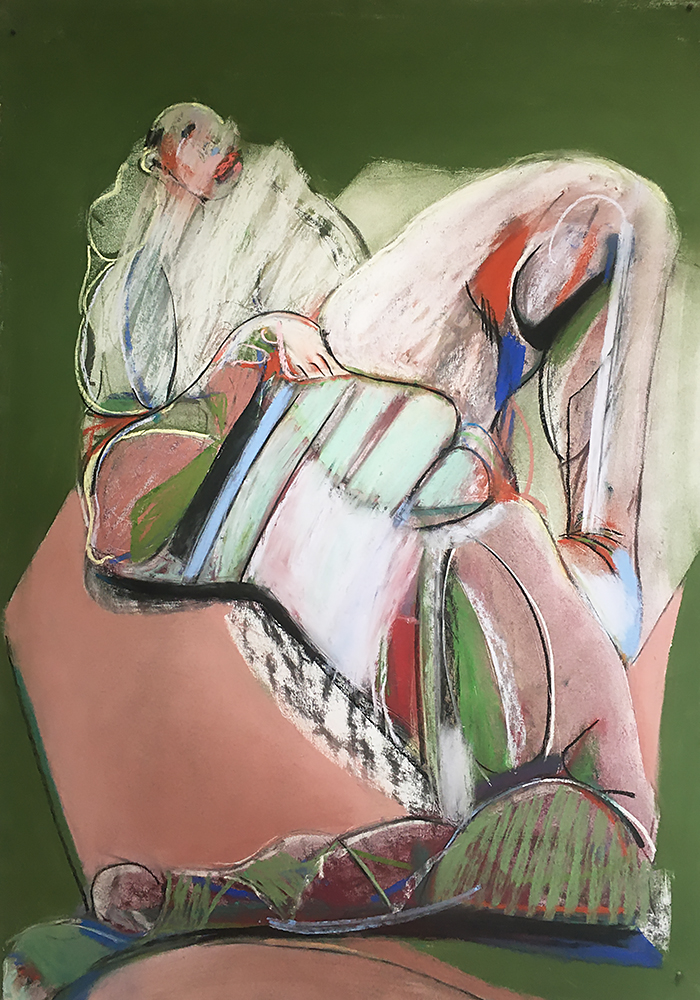
Untitled 007, Untitled 008, Untitled 009 & Untitled 010
Charcoal and pastel on paper70x100cm
2021
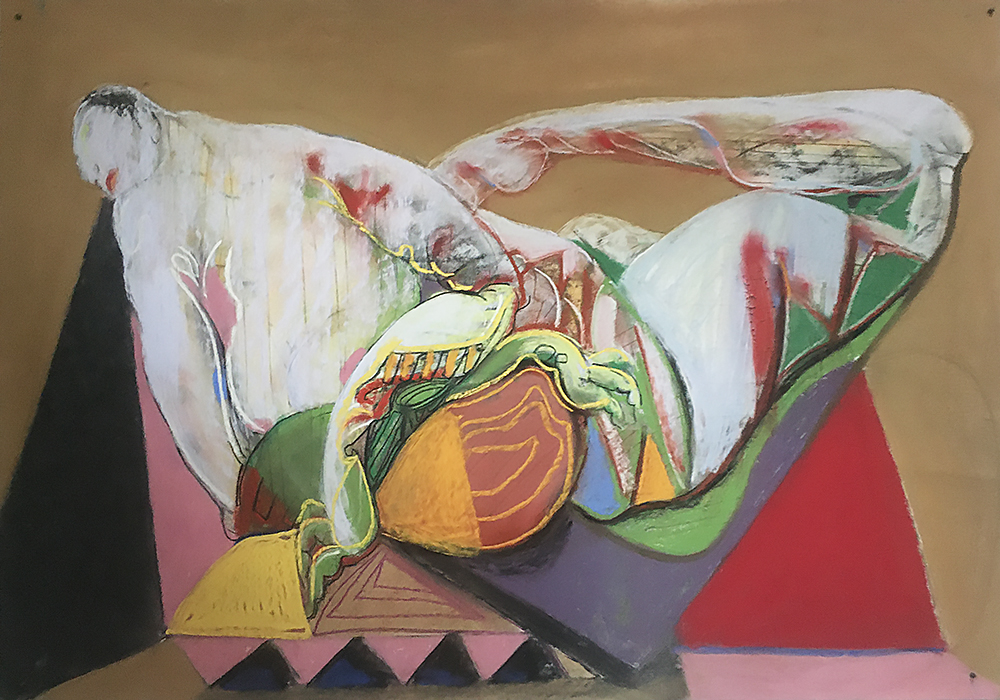
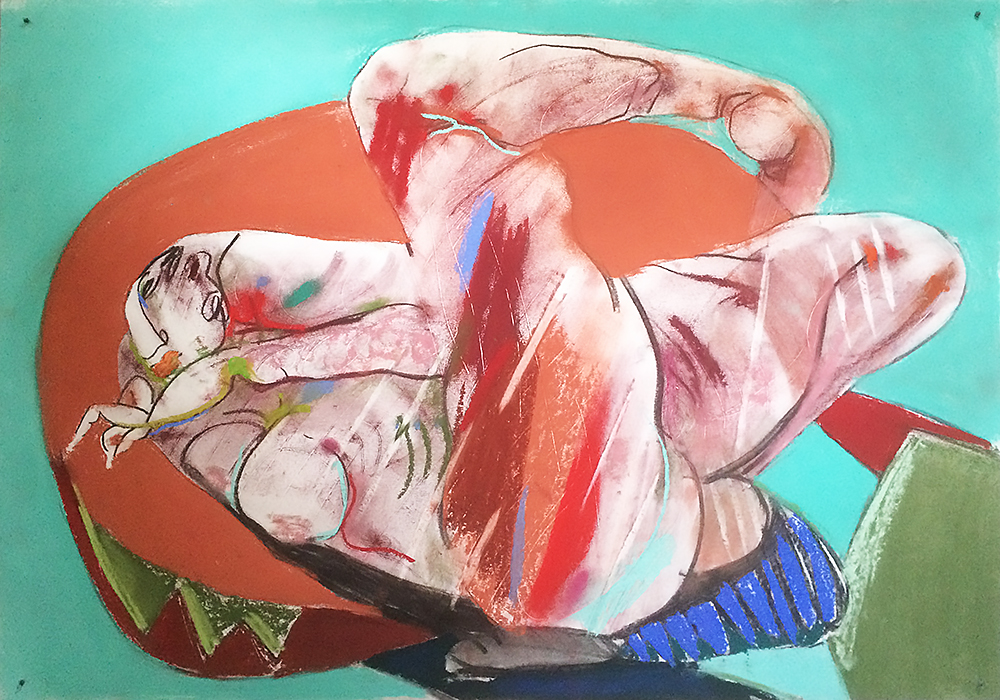
Untitled 011 & Untitled 012
Charcoal and pastel on paper100x70cm
2021
Both female and male ancestral figures carved by African people to protect their homes stand straight and tall.
True, many do have knees that bend forward
But this just adds to a sense of potential movement and energy.
They stare straight ahead out into the world
seemingly unafraid of what they might encounter there.
Having an image of ancestors of such bravery would be an enormous help to anyone trying to survive.
My figures, by contrast, seem to start from the foetal position.
They try to uncurl into the space surrounding them.
They try with great energy and anger.
But they always seem to be hampered.
I think I keep making these pictures to see how, and then maybe why, this can happen.
Lorraine Fernie
2017-07-08
